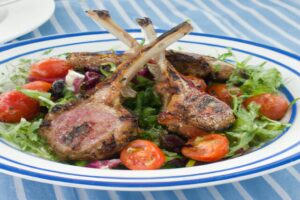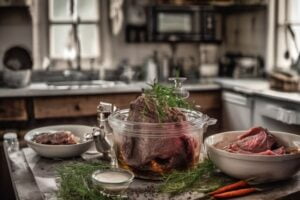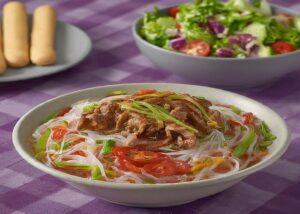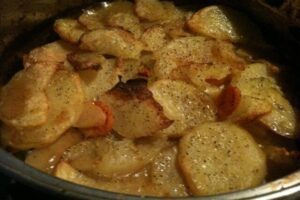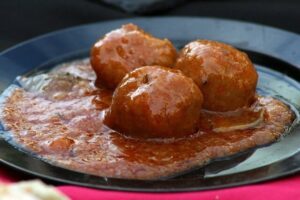Dive into this comprehensive guide and get up close with a variety of different lamb cuts and their recommended cooking methods!
Use this to understand more about preparing flavourful dishes with the perfect cut of lamb.

A Comprehensive Guide to Understanding Lamb Cuts & Their Best Cooking Methods
Lamb meat is considered to be one of the best meats you can eat due to its high nutritional value, as well as its delicious flavour.
Different types of lamb cuts offer different levels of tenderness, fat content, and flavour profiles that make each cut special.
From shanks to chops to roasts, there are a variety of different types of lamb cuts that can be used in a variety of dishes.
In this article I will discuss what makes these different types of lamb cuts so special.
<2>What Are Lamb Cuts and What Makes Them Special?
Lamb cuts are the various pieces of meat that you can get from a lamb carcass.
They vary in size and shape, and each cut has its own unique flavour and texture.
Lamb cuts are very popular in many countries around the world, especially in Australian, New Zealand, Mediterranean and Middle Eastern cuisines.
Lamb is a sheep that is typically less than 1 year old.
There is little fat on lamb, and the meat can vary in colour from a tender pink to a pale red.
Lamb less than 3 months of age is called spring lamb.
Spring lamb is extremely tender and has a milder flavour than lamb.
What is Mutton
Mutton is a term used to describe the meat of an adult sheep.
It has significantly more fat and connective tissue than lamb, thus it tends to be tougher and fattier than lamb meat.
Despite this, it’s still enjoyed by many thanks to its strong and distinct flavour.
As one of the oldest forms of domesticated animals, sheep have been providing us with food for centuries.
Mutton is meat from a sheep that is older than 1 year, ideally 3 years old.
It is an intense red colour and contains a considerable amount of fat.
Its flavour can be very strong, and you might have to acquire the taste before being able to enjoy a meal of mutton if you’re an American.
The gamey flavour of mutton does tend to appeal more to people who also enjoy other game meats such as deer, wild pig, and rabbit.
What Is the Difference Between Lamb, Mutton, and Sheep?
The distinction between lamb, mutton, and sheep relates to the age of the animal.
- Lamb is the most tender and can be cooked quickly; it comes from animals no more than 1 year old.
- Mutton is tougher and fattier, often used in stews and roasts, where it needs longer cooking times to tenderise; it comes from animals usually over 2 years old.
- Sheep refers generally to adult ovine species regardless of age or gender.
What are the Health Benefits & Nutritional Facts About Eating Lamb Cuts?
Let’s quickly lokk at the nutritional facts about eating lamb cuts, as well as the health benefits associated with them.
Lamb is a popular source of protein and has been eaten for centuries.
It is a great source of essential vitamins and minerals, as well as healthy fats that are beneficial for your overall health.
Eating lamb cuts can help you maintain a balanced diet and provide you with the necessary nutrients to keep your body functioning properly.
Below I will explore some of the different types of lamb cuts available and how they can be incorporated into your meals.
A Closer Look at Different Types of Lamb Cuts
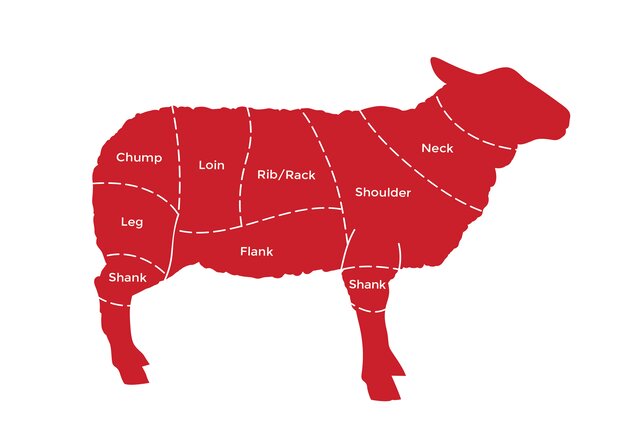
Lamb is one of the most popular meats in the world, and there are many different types of cuts available.
Knowing the different types of lamb cuts can help you choose the right cut for your dish.
Let’s take a closer look at some of the most popular lamb cuts, including loin chops, shank and leg of lamb.
I will discuss their differences in terms of flavour, texture and cooking methods so that you can make an informed decision when selecting your next cut of lamb.
-
Chops/Rack
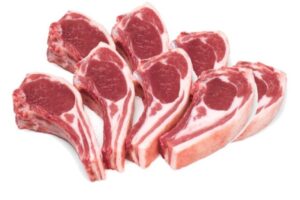 Lamb chops and cutlets are really tender and flavoursome – they are also the most expensive cut of lamb.
Lamb chops and cutlets are really tender and flavoursome – they are also the most expensive cut of lamb.Chops are taken from the ribs of the lamb and cooked individually, crumbed cutlets can be popular.
When a number of ribs are left together and cooked as a whole, they are called a rack of lamb.
A rack can be frenched (fat and tissue between the bones is removed), capoffed (the fat cap is removed) or fully denuded (all fat removed).
Chops/Rack cooking methods
-
Lamb Leg
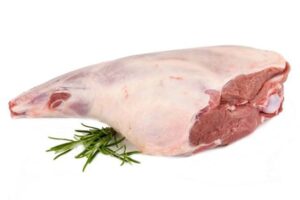 Lamb legs are lean and work hard, which means they have strong flavour but can be tough and dry if overcooked.
Lamb legs are lean and work hard, which means they have strong flavour but can be tough and dry if overcooked.Leg of lamb is highly versatile and tastes fantastic roasted whole on the bone, or boned and barbecued.
Leg is a quite expensive cut that is perfect for weekly meals or entertaining – a whole lamb leg will serve at least 6 people.
Leg of lamb cooking methods
- Roasting
- Grill/Broiling
- Barbecued
-
Lamb Loin Chop
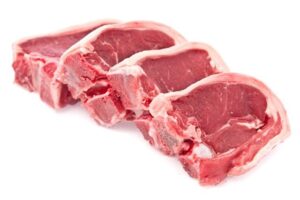 Loin comes from the middle-lower section of the rear quarter, and is usually divided into loin chops and lamb tenderloin.
Loin comes from the middle-lower section of the rear quarter, and is usually divided into loin chops and lamb tenderloin.
Loin chops are lean, tender and really tasty.They are one of the most readily available cuts at supermarkets and they are easy to prepare.
For optimal tenderness, loin cooking time should be minimal.
Loin chop cooking methods
- Roasting
- Grilling/Broiling
- Pan Fry
- Barbecue
-
Lamb Shank
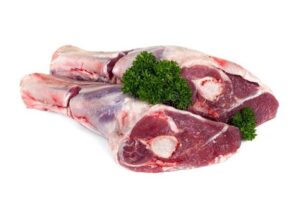 Lamb shank comes from the lower part of the fore or hind leg, and is almost always cooked in liquid until the meat is so tender it falls off the bone.
Lamb shank comes from the lower part of the fore or hind leg, and is almost always cooked in liquid until the meat is so tender it falls off the bone.Shank contains a lot of collagen, which, when cooked slowly, gives the meat a velvety and melting texture.
Shank tastes best roasted or braised, as this draws out the juices from the bone.
Although shank requires long, slow cooking, its unique flavour and winning texture is definitely worth it.Lamb shank cooking methods
- Stewing
- Braising
- Smoking/Low and slow
-
Lamb Neck
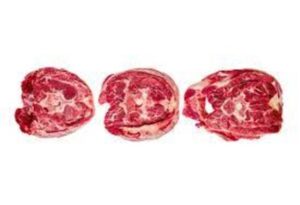 Neck is an economical cut – it is often left connected to the shoulder, so you may need to ask your butcher to separate it for you.
Neck is an economical cut – it is often left connected to the shoulder, so you may need to ask your butcher to separate it for you.Lamb neck tastes fantastic when cooked low and slow in stews and curries, but, unlike shoulder, can also be cooked as a steak over high heat until pink.
Neck is versatile and tastes great with a wide range of accompanying flavours.
Lamb neck cooking methods
- Stewing
- Braising
- Barbecued
- Smoking/Low and slow
-
Lamb Rump
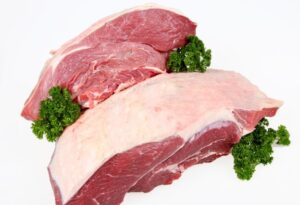 Rump comes from the back of the lamb, and is lean, tender and very flavoursome.
Rump comes from the back of the lamb, and is lean, tender and very flavoursome.Lamb rump is often cooked as a mini roast and is also popular cut into steaks.
Be careful not to overcook rump though, as it becomes tough when it dries out.
Lamb rump cooking methods
- Pan fried
- Stir Fried
- Seared and roasted
- Stewed
-
Lamb Chump
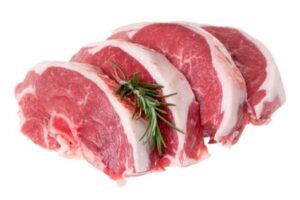 Lamb chump is equivalent to beef rump – it is an inexpensive cut taken from the area where the leg meets the shortloin.
Lamb chump is equivalent to beef rump – it is an inexpensive cut taken from the area where the leg meets the shortloin.Both chump chops and lamb rump are taken from this area.
Lamb Chump cooking methods
- Roast
- Barbecued
- Grilling/Broiling
- Stew
-
Lamb Tenderloin
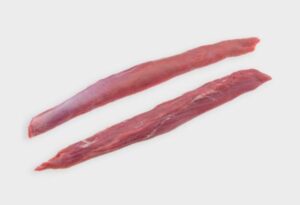 Lamb tenderloin is also known as lamb fillet and is prepared by removing the muscle from the underside of the shortloin.
Lamb tenderloin is also known as lamb fillet and is prepared by removing the muscle from the underside of the shortloin.Tenderloin is one of the most tender cuts available due to its minimal usage by the animal – it has little to no fat or connective tissue.
Lamb Tenderloin cooking methods
- Grilling/Broiling
- Barbecued
- Pan fry
-
Lamb Shortloin
 The eye of shortloin or ‘backstrap’ is taken from the middle of the loin and then trimmed of all excess fat.
The eye of shortloin or ‘backstrap’ is taken from the middle of the loin and then trimmed of all excess fat.Shortloin is one of the leanest, sweetest and most tender cuts of lamb.
Lamb Shortloin cooking methods
- Grilling/Broiling
- Pan fry
- BBQ
-
Lamb Shoulder
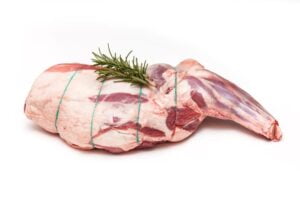 Lamb shoulder is the most economical cut, which means it needs long, slow and moist cooking to tenderise it.
Lamb shoulder is the most economical cut, which means it needs long, slow and moist cooking to tenderise it.
Like leg, the shoulder works hard, so it is full of flavour but can be tough if undercooked or cooked too quickly.Lamb shoulder is commonly used in stews and casseroles, and ground lamb also often comes from the shoulder.
For maximum flavour, cook lamb shoulder on the bone.Lamb Shoulder cooking methods
- Braising
- Stewing
- Smoking/Low and slow
-
Lamb Forequarter
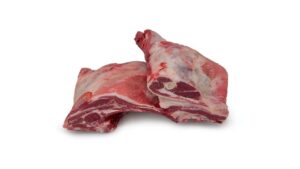 Cuts from the forequarter (including forequarter chops, forequarter rack and lamb shoulder) are economical and suited to both long and slow cooking.
Cuts from the forequarter (including forequarter chops, forequarter rack and lamb shoulder) are economical and suited to both long and slow cooking.Forequarter chops are the largest lamb chops available.
Lamb Forequarter cooking methods
- BBQ
- Grilling/Broiling
- Pan fry
- Smoking/Low and slow
7 Easy Tips For Roasting the Best Lamb Dish
Craving a delicious lamb dish? Discover easy tips for roasting the best lamb cuts in seven simple tips to create the perfect dish!
- Let the meat come to room temperature just before roasting it.
- Always season well before cooking.
- Use a roasting rack to ensure even browning and heat circulation around the meat.
- Roast leaner cuts in a hotter oven:
A hot oven gets leaner cuts of meat nicely browned on the outside before they become overcooked and dry in the middle. - Roast fattier pieces of lamb longer and at lower temps:
Low and slow allows the fat to slowly melt and turn into tender gelatin which all helps with flavour and tenderness. - Rest the meat before carving. This allows the meat fibres – which contract in the oven – to relax again, giving juicier meat.
- Use a straight-edged (flat-bladed) carving knife, not serrated. Always carve across the grain to ensure slices are tender.
Cook Roast Lamb To Perfection – A Timetable Guide
Get your roast lamb right with this simple and easy-to-follow guide!
Learn about different cuts of lamb roasts and how long to cook them for optimum results.
- Preheat oven to the recommended temperature for your cut.
- Follow the recommended roast lamb cooking times for your cut’s weight.
- Check the internal temperature with a meat thermometer.
- Remove roast shortly before it reaches the final temperature as it continues to cook while resting.
| Lamb cut | Oven temp. | Rare internal temp 58°C/136°F | Medium internal temp 65°C/149°F | Well Done internal temp 70°C/158°F |
|---|---|---|---|---|
| Eye of loin/backstrap, lamb round, topside roasts, mini roast, lamb rump | 220°C/425℉ | 22 min per 500g | 28 min per 500g | 32 min per 500g |
| Rack of lamb, four-rib roast, crown roast | 200°C/400℉ | 24 min per 500g | 33 min per 500g | 43 min per 500g |
| Loin (boned and rolled) easy-carve leg or shoulder | 180°C/350℉ | 19 min per 500g | 26 min per 500g | 30 min per 500g |
| Butterflied lamb leg | 180°C/350℉ | 12 min per 500g | 15 min per 500g | 18 min per 500g |
| Butterflied lamb shoulder | 180°C/350℉ | 22 min per 500g | 25 min per 500g | 29 min per 500g |
| Boneless lamb shoulder (Boned and rolled) | 180°C/350℉ | 19 min per 500g | 26 min per 500g | 31 min per 500g |
Using a ChefsTemp Thermometer for Accurate Cooking
A ChefStemp thermometer is the ideal tool for anyone looking to cook accurately and on time.
Using the ChefStemp thermometer helps you determine the optimal temperature for cooking meats, poultry, fish, eggs, and other recipes.
With a large LCD display and easy-to-read temperature indicators, it also provides fast and accurate readings for quick results in both Celsius and Fahrenheit.
- ChefsTemp Pocket Pro
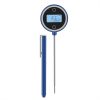
- Description:Professional thermocouple probe sensor with 1 second reading time, this pocket size kitchen gadget is suitable for both professional chefs and home cooks. Pocket Pro is another amazing innovation from ChefsTemp. It is a 4-way rotating display thermometer,
- Price: $34.99
- ChefsTemp Finaltouch X10

- Description:Finaltouch X10 is the Winner of Red Dot Product Design in 2022. The Red Dot Design Award is one of the three most prestigious professional design competitions in the world. Winning the award proves its the Leader in Design and Technology. Chefs around the
- Price: $69.99
- ChefsTemp Quad Xpro
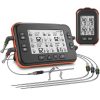
- Description:Quad XPro is designed to track temperatures over an extended period of time with moderate-heat cooking methods, such as smoking, oven-roasting, deep-frying, home brewing, and Sous Vide and to be used while grilling.
- Price: $109.99
The Best Recipes for Preparing Delicious Dishes with Different Lamb Cuts
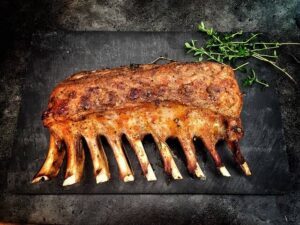 Lamb is a delicious and versatile meat that can be cooked in a variety of ways. Here, we will explore the best recipes for preparing delicious dishes with different lamb cuts.
Lamb is a delicious and versatile meat that can be cooked in a variety of ways. Here, we will explore the best recipes for preparing delicious dishes with different lamb cuts.
From slow roasted leg of lamb to grilled rack of lamb, we will provide you with tips on how to cook each cut perfectly and make the most out of its flavour.
We will also discuss how to pair each dish with the right side dishes and sauces for a truly mouthwatering meal.
Let’s get cooking!
FAQ
Can lamb be eaten rare?
Yes, lamb can be eaten rare. It is commonly served as a medium-rare cut, but some people prefer their lamb to be cooked to a rare or even blue degree
of doneness.
The most common cuts of lamb that can be cooked and served rare are loin chops, rib chops, sirloin chops, leg steaks and shoulder steaks.
While lamb can be eaten rare, it should always be cooked until the internal temperature reaches at least 65°C (145°F) for safety reasons.
Is Lamb Meat Very Expensive?
Lamb is definitely more expensive than other types of meat such as chicken or pork, but it isn’t always unfairly priced considering how far reaching it has become in culinary cultures throughout the world.
Furthermore, when buying lamb via online or in stores, there are often discounts or sales according to certain seasons while customers can also choose to buy organic products which adds up to a higher price.
Does Lamb Contain More Fat Than Other Types Of Meats?
Unlike beef, which tends to be well-marbled with fat layers between the fibres of its muscle pieces.
Lamb usually doesn’t contain much fat other than the lamb chop with some marbling on one side only.
This makes cuts like leg and shoulder for roasting typically leaner compared to beef counterparts which is good for those looking for a healthier option from red meat!
Can I Use Minced/Ground Lamb For Burgers?
Yes! Ground lamb can make delicious burgers when combined with spices and herbs like garlic powder and parsley for a bolder flavour profile against traditional beef patties just fine!
It is important not to overwork or handle the meat too much as it will dry out during cooking making them tougher than they should be.
Which lamb is best to roast?
The shoulder, leg, rib rack, loin and breast are the five most popular cuts of lamb that are used for roasting.
- Leg is often referred to as the ‘king of roasts’ since it is tender and juicy when cooked properly.
- Shoulder is a great choice for slow roasting and tastes best when cooked using moist heat.
- Rib racks can be pan-seared or roasted and make an impressive presentation when cut into individual ribs.
- Loin is leaner than other cuts and needs lower cooking temperatures so that it doesn’t become dry or tough.
- Breast is also great for fast roasting or grilling but requires extra care when cooking to ensure that it does not become tough.
What Types of Lamb Are Best for the BBQ?
The best cuts of lamb for grilling and barbecuing are leg of lamb, shoulder, sirloin roast, loin chops and rib chops.
When buying leg of lamb, opt for boneless to save on time spent trimming fat.
A combination of both direct and indirect heat is ideal when barbecuing to ensure the meat gets cooked through without drying it out or charring it too much.
What lamb to use for spit roasting?
One of the best cuts of lamb to use for spit roasting is a leg of lamb.
This cut has plenty of meat and fat, so it will stay juicy as it cooks slowly over the fire.
Another great option is shoulder of lamb, which has lots of flavour due to its marbling.
Both the leg and shoulder can be seasoned with savory spices then roasted on the spit for an unforgettable meal.
An entire lamb can also be spit roasted.
What lamb to use for ragu?
When making a ragu, it is best to use a boneless cut of lamb like the leg or shoulder.
The leg has fewer fat and gristle than the shoulder, but still has enough fat for flavour and tenderness.
If time permits, it is best to slow-cook the joint for several hours as this helps to break down the fibres in the meat and make an incredibly rich and tasty ragu.
What Lamb Cut is Best for Curry?
For curry, the best cuts of lamb to use are shoulder, leg or ribs.
- Shoulder is a tougher cut, so it may require longer cooking time to become tender.
- Leg of lamb is leaner and flavorful but can also benefit from a longer cooking time.
- Ribs have a good blend of fat and meat and can be cooked slowly, making them an ideal choice for curries that require simmering for hours.
Do I Need To Marinade Before Cooking My Lamb Dishes?
It depends on what type of meal you plan to make.
Marinating is highly recommended regardless before grilling however since that method relies heavily on direct contact with heat sources potentially causing flare ups ruining delicate meat surfaces.
Flank steak slices take well any olive oil based mixture so brining a few hours prior serves up nice surface tenderness eventually carried through till plating time arrives too!
« Cooking Definitions